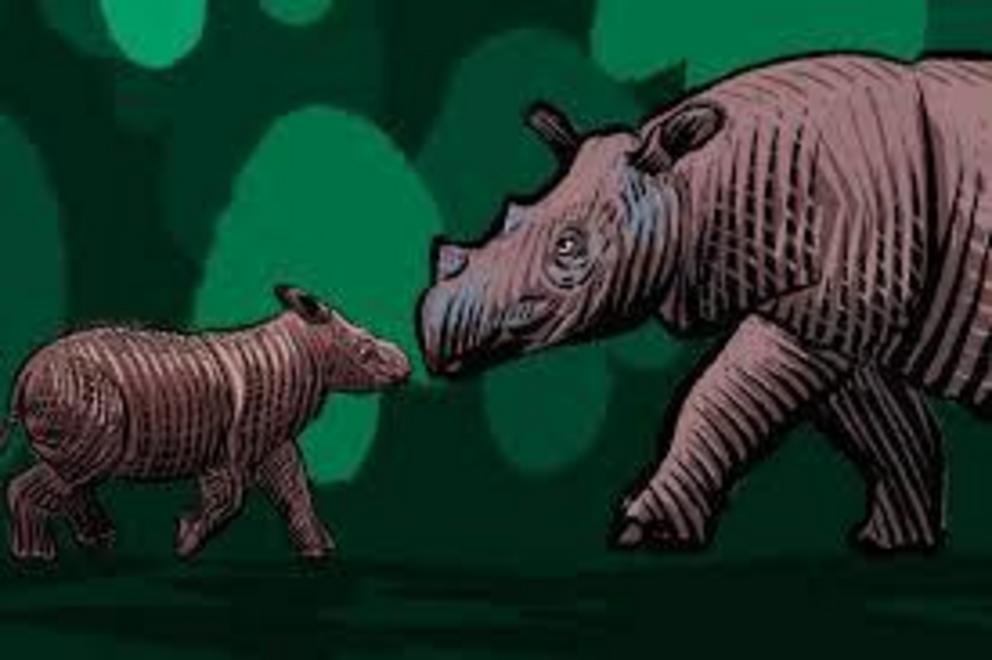The Sumatran rhino is sliding into extinction. It doesn’t have to
- A new animated short film from Mongabay, illustrated by artist Roger Peet, depicts the Sumatran rhino’s slide toward extinction.
- No more than 80 Sumatran rhinos are believed to survive today, scattered across isolated and fragmented habitats in Indonesia.
- Driven to the brink of extinction by habitat loss and hunting, Sumatran rhinos today face an even more fundamental threat: experts fear that too few calves are being born to offset even natural deaths in the remaining populations.
The Sumatran rhino (Dicerorhinus sumatrensis) is possibly the world’s rarest large mammal, and certainly one of the most endangered.
Official figures put the population at around 80 individuals, including eight in captive-breeding centers in Indonesia. More pessimistic projections put the species’ wild population as low as 30, fragmented into isolated and shrinking populations across the Indonesian islands of Sumatra and Borneo.
Genetic evidence suggests that the species was never common, with its population peaking at fewer than 58,000 around 950,000 years ago. It is believed to have been in decline for more than 10,000 years, since rising seas at the end of the last ice age cut off the islands of Southeast Asia from the mainland, fragmenting the species’ habitat.
That population decline accelerated rapidly in the 20th century, as Southeast Asia’s human population mushroomed. More and more land was converted for agriculture and human settlements, and forests were opened up to hunters seeking to feed a growing demand for rhino horns and other animal parts.
By 1986, when Sumatran rhinos were first added to the IUCN’s endangered species list, their population was estimated at somewhere between 425 and 800. That figure was revised down to 400 by 1996, and to just 100 by 2015. In November 2019, the last rhino known to survive in Malaysia died, leaving Indonesia as the species’ final refuge.
Hunting and loss of habitat to oil palm and other crops drove the species to the edge of extinction, and both remain threats. Forests are still being felled across Sumatra and Borneo. In recent years, Indonesian police have caught traders attempting to sell Sumatran rhino horns.
Today, experts fear the species faces an even greater threat: a low birthrate. As Sumatran rhino populations shrink and become more isolated from each other, the chances of rhinos finding mates — especially healthy, non-related mates — decreases. And, to make matters worse, female Sumatran rhinos are induced ovulators, meaning that they ovulate only when males are around. Females that go too long without ovulating or mating have been found to develop tumors and other reproductive pathologies that leave them unable to bear young even if they do later mate.
With the remaining wild Sumatran rhinos hidden deep in remote forests and rarely glimpsed even by dedicated rhino patrols, nobody knows exactly how many rhinos are still being born. Over the past 20 years, five Sumatran rhinos have been born in captivity, and there are hopeful signs that at least one population, in Sumatra’s Leuser ecosystem, is still viable and growing. But if the birthrate of the species as a whole is too low, the number of new rhinos being born may simply not be enough to offset even the natural deaths.
Without decisive, and effective, conservation efforts, the species’ arc toward extinction, which began millennia ago, could be completed in our lifetimes.
An upcoming film from Mongabay will look at dilemmas facing conservationists working to breed Sumatran rhinos in captivity.

